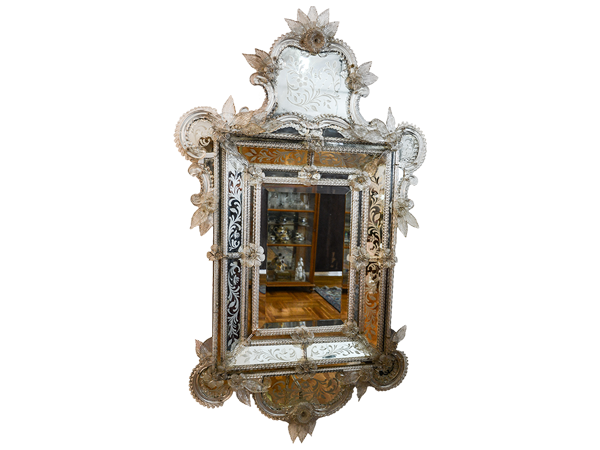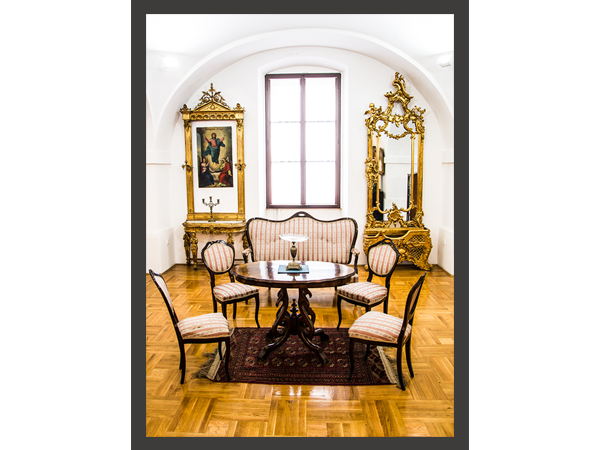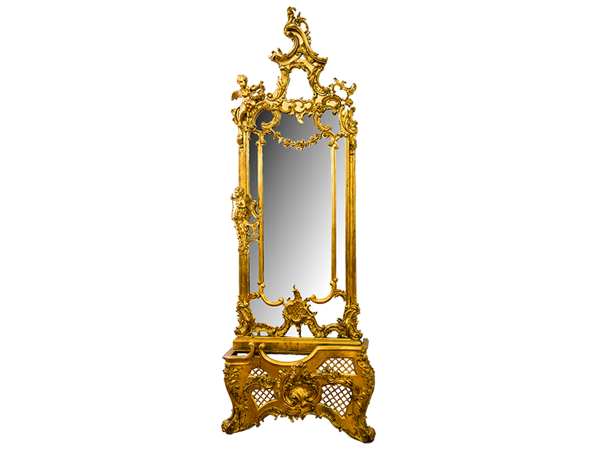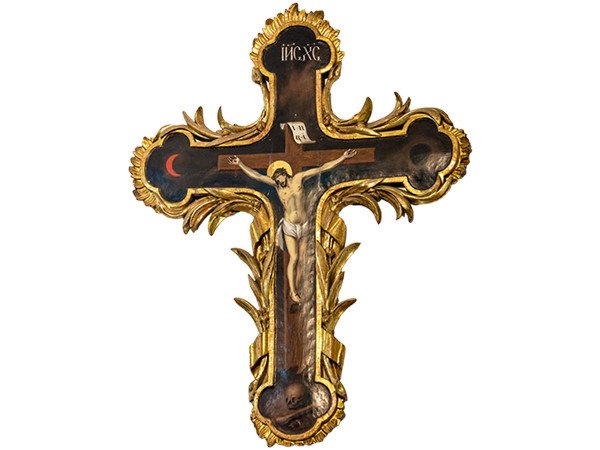Title:
Wall mirror
English
Description:
Lavishly wall mirror is made in the style of the second rococo, most likely in a Czech shop. On the wide frame with curved lines, numerous flakes of colorless cut glass were applied and flat glass panels of the mirror were engraved with rococo cartouche. This extremely luxurious item could be found in the wealthy aristocratic civil households in Vojvodina.
State of origin of the cult. artefact:
Czech Republic
History:
Part of the permanent exhibition of the City Museum of Novi Sad, under the supervision of the museum advisor, art historian, Ljiljana Lazic.
Copyright:
City Museum of Novi Sad
Creator:
Srdjan Veselinov
Style:
Material:
Type of cultural artefact:
Formats of digital document:
Images:

Власник записа:
srdjan.veselinov
Name of the original:
Зидно огледало
Municipality:
Novi Sad
Region:
Vojvodina
Country:
Serbia
Institution:



